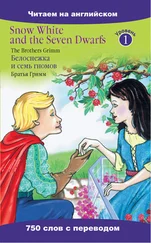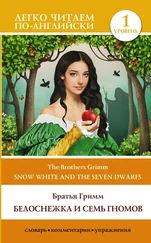Lisa See - Snow Flower And The Secret Fan
Здесь есть возможность читать онлайн «Lisa See - Snow Flower And The Secret Fan» весь текст электронной книги совершенно бесплатно (целиком полную версию без сокращений). В некоторых случаях можно слушать аудио, скачать через торрент в формате fb2 и присутствует краткое содержание. Жанр: Старинная литература, на английском языке. Описание произведения, (предисловие) а так же отзывы посетителей доступны на портале библиотеки ЛибКат.
- Название:Snow Flower And The Secret Fan
- Автор:
- Жанр:
- Год:неизвестен
- ISBN:нет данных
- Рейтинг книги:3 / 5. Голосов: 1
-
Избранное:Добавить в избранное
- Отзывы:
-
Ваша оценка:
- 60
- 1
- 2
- 3
- 4
- 5
Snow Flower And The Secret Fan: краткое содержание, описание и аннотация
Предлагаем к чтению аннотацию, описание, краткое содержание или предисловие (зависит от того, что написал сам автор книги «Snow Flower And The Secret Fan»). Если вы не нашли необходимую информацию о книге — напишите в комментариях, мы постараемся отыскать её.
Snow Flower And The Secret Fan — читать онлайн бесплатно полную книгу (весь текст) целиком
Ниже представлен текст книги, разбитый по страницам. Система сохранения места последней прочитанной страницы, позволяет с удобством читать онлайн бесплатно книгу «Snow Flower And The Secret Fan», без необходимости каждый раз заново искать на чём Вы остановились. Поставьте закладку, и сможете в любой момент перейти на страницу, на которой закончили чтение.
Интервал:
Закладка:
She sat up and I rolled onto my back. I thought I was hot these past nights, but now, naked, in the moonlight, I felt as though a fire burned inside me far hotter than anything the gods could inflict on us through the mere cycles of the seasons.
I made myself concentrate when I realized where she was planning on writing the first character. She had moved to the end of the bed and had lifted my feet onto her lap. Just on the inside of my left ankle directly above the edge of my red sleeping slipper she began to write. When she was done, she turned her attention to my right ankle. From there, she alternated from limb to limb, always staying just above the bindings. My feet—those places of so much pain and sorrow, so much pride and beauty—tingled with pleasure. We had been old sames for eight years, yet we had never been this close. The line when she was done: “Looking up, I enjoy the full moon in the night sky.”
I was eager for her to experience what I had felt. I held her golden lilies in my hands, then set them to rest on my thighs. I chose the spot that had been most exquisite for me: the shallow between the ankle bone and the tendon that rose up the back of the leg. I wrote the character, which can mean bending over, kowtowing, or prostrating oneself. On her other ankle I traced the word I.
I set her feet down and wrote a character on her calf. After this, I moved to a spot on the inside of her left thigh just above her knee. My last two characters were high up on her thighs. I leaned down to concentrate on writing the most perfect characters possible. I blew on my strokes, knowing the sensation it would cause, and watched as the hair between her legs swayed in response.
Afterward we recited the entire poem together.
“The bed is lit by moonlight.
I think it is the light snow of an early winter morning.
Looking up, I enjoy the full moon in the night sky.
Bending over, I miss my hometown.”
We all know that poem is about a scholar who is traveling and missing his home, but on that night and forever after I believed it was about us. Snow Flower was my home, and I was hers.
Beautiful Moon
BEAUTIFUL MOON RETURNED THE NEXT DAY, AND WE GOT BACK to work. Months ago, each of our future in-laws had Delivered the Dates for our weddings, along with the first installments of our official bride-prices—more pork and candy, as well as empty wooden boxes to fill with all the things we would make for our dowries. Finally, and, most important, they sent cloth.
I have told you that Mama and Aunt made cloth for our family, and by now Beautiful Moon and I were adept at weaving ourselves. But the word homegrown comes to mind when I think of what we created. The cotton was cultivated by Baba and Uncle, the harvest cleaned by the women in our household, the beeswax we used to create designs and the dyes for turning the fabric blue were used sparingly because we were so frugal.
Other than what we made ourselves, I could only compare my bridal cloth to that used in Snow Flower’s tunics, trousers, and headdresses, which had been constructed from beautiful fabrics and sophisticated patterns into a stylish wardrobe. One of my favorite outfits she wore in those days was made from indigo cloth. The intricate design of the indigo and the cut of the jacket were better than anything the married women in Puwei owned or made. Still, Snow Flower wore it with ease until it started to fade and fray. What I’m trying to say is that the cloth and its cut inspired me. I wanted to make clothes for myself that would be suitable for everyday wear in Tongkou.
But the cotton my in-laws sent as part of my bride-price changed all my perceptions. It was soft, without seeds, with complex designs, and dyed in the rich deep indigo so prized by the Yao people. With that gift I realized I still had much to learn and accomplish, but even this cotton was nothing compared to the silk. What arrived for me was not only of fine quality but perfect in color. Red for marriage, but also for anniversaries, New Year’s celebrations, and other festivities. Purple and green, both appropriate for a young wife. A bluish gray the color of the sky before a storm and a bluish green the color of a village pond in summer for my years as a matron and later a widow. Black and dark blue for the men in my new home. Some of the silks were plain, while others had been woven to include double-happiness, peony, or cloud patterns.
The rolls of silk and cotton my in-laws sent were not given to me to do with as I pleased. They were to be used in preparing my dowry, just as Beautiful Moon and Snow Flower had to use their gifts to build their dowries. We had to make enough quilts, pillowcases, shoes, and clothes to last a lifetime, since Yao nationality women believe they should never take anything from their in-laws. Quilts! Let me tell you about those. They are boring and hot to make. However, since everyone believes that the more quilts you bring with you to your in-laws’ house, the more children you will have, we made as many as possible.
What we loved to make were shoes. We made them for our husbands, our mothers-in-law, our fathers-in-law, and anyone else who lived in our new home, including brothers, sisters, sisters-in-law, and all children. (I was lucky; my husband was the eldest son. He had three younger brothers only. Men’s shoes were not ornate, so I could do them quickly. Beautiful Moon had a greater burden. Her new home had one son, plus his parents, five sisters, an aunt, an uncle, and their three children.) We girls also made sixteen pairs for ourselves, four pairs for each of the four seasons. These more than the other things we made would be highly scrutinized, but we were happy with that knowledge because we gave each and every pair the greatest care possible, from creating the soles to the final embroidery stitch. Shoemaking allowed us to display our technical as well as our artistic skills, but it also sent a joyful and optimistic message. In our dialect, the word for shoe sounds the same as the word for child. Just as with the quilts, the more shoes we made, the more children we would have. The difference is that shoemaking requires delicacy, while quiltmaking is a heavy chore. Because three girls worked side by side, we competed in the friendliest way to compose the most beautiful designs on the outside of each pair of shoes, while giving great strength and support to the inside.
Our future families had sent patterns for their feet. We had not met our husbands and did not know if they were tall or pockmarked, but we knew the size of their feet. We were young girls—romantic as anyone of that age—and we imagined all kinds of things about our husbands from those patterns. Some turned out to be true. Most were not.
We used the patterns to cut pieces of cotton cloth, then glued together three layers of those footprints at a time. We made several sets of these and set them on the windowsill to dry. During Catching Cool Breezes, they dried very quickly. Once dry, we took those layered forms, stacked three together, and sewed them into a thick and sturdy sole. Most people do a simple repeat pattern that looks like rice seeds, but we wanted to impress our new families so we stitched different designs: a butterfly spreading its wings for a husband, a chrysanthemum in bloom for a mother-in-law, a cricket on a branch for a father-in-law. All that work just for the soles, but we saw these as messages to the people we hoped would love us when we married in.
As I said, it was unbearably hot that year during Catching Cool Breezes. We sweltered in the upstairs chamber. Downstairs was only slightly better. We drank tea, hoping it would refresh our bodies, but even in our lightest summer jackets and trousers we suffered. So we talked often about cool memories from our childhoods. I spoke of putting my feet in the river. Beautiful Moon remembered running through the fields during late autumn when the air was crisp against her cheeks. Snow Flower had once traveled north with her father and had experienced the frigid wind that blew in from Mongolia. These things did not soothe us. They were a torment.
Читать дальшеИнтервал:
Закладка:
Похожие книги на «Snow Flower And The Secret Fan»
Представляем Вашему вниманию похожие книги на «Snow Flower And The Secret Fan» списком для выбора. Мы отобрали схожую по названию и смыслу литературу в надежде предоставить читателям больше вариантов отыскать новые, интересные, ещё непрочитанные произведения.
Обсуждение, отзывы о книге «Snow Flower And The Secret Fan» и просто собственные мнения читателей. Оставьте ваши комментарии, напишите, что Вы думаете о произведении, его смысле или главных героях. Укажите что конкретно понравилось, а что нет, и почему Вы так считаете.












